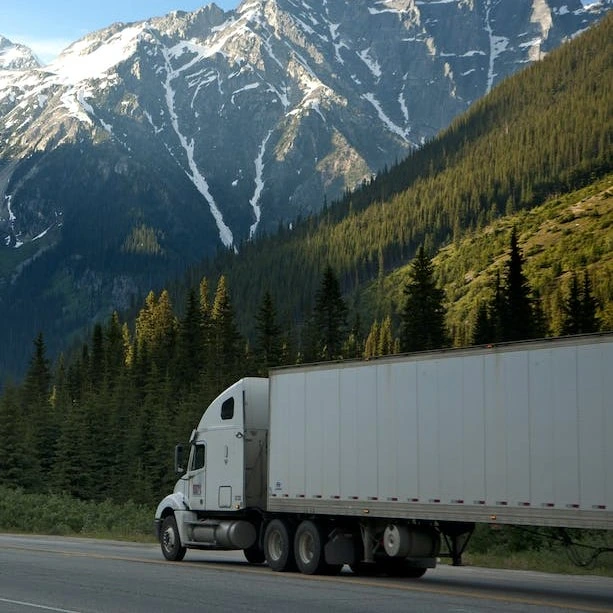Transforming your mundane trailer into an IoT platform is an affordable approach to gaining the benefits of a smart trailer. This trailer-as-a-platform model provides improved visibility for your trucking and logistics operations, allowing you to monitor individual trailers as well as the cargo and equipment that they carry. We spent time in a previous blog outlining how you know whether your trailer is an IoT platform, the benefits of transforming your trailer, and how you can transform your trailer. One thing we did not discuss, however, is the role of telematics in building smarter trailers. Can telematics be used to transform your trailer into an IoT platform? Let’s break it down one step at a time.
Increase Your ROI by Investing in AirFinder Everywhere
- Loss Prevention. Reduce the amount of loss that occurs during the supply chain process
- Location Coverage. AirFinder Everywhere uses a combination of GPS, Cellular, and WiFi to determine location everywhere
- Security Alerts. Know when a delay in shipment has occurred so the problem
can be addressed immediately.
What Makes a Trailer an IoT Platform?
In order to assess whether telematics can make your trailer into an IoT platform, we need to understand what makes a trailer an IoT platform in the first place. If telematics can help your trailer achieve these traits, then it can make your trailer an IoT platform; if it cannot help your trailer achieve these traits, then it requires supplementary systems to achieve this end.
In our original blog post about what makes a trailer an IoT platform, we took an in-depth look at the five main traits of a trailer-as-a-platform system. Here, we’ll simply provide a brief recap of those conditions.
The five main traits of a trailer that is an IoT platform are:
1. The trailer is still visible when not connected to a running truck. In order for a trailer to be considered an IoT platform, fleet managers must be able to retain complete location and condition visibility for the trailer even when the truck is turned off or the trailer is disconnected and sitting in a lot somewhere.
2. Every valuable asset the trailer contains is collectively and individually accounted for. If your trailer is an IoT platform, then your location, condition, and movement data does not stop at the trailer itself. Instead, you know what’s traveling with the trailer at any given time, and you know the condition of that cargo and equipment.
3. The trailer’s data can be used to make informed decisions in real time. Trailers that are IoT platforms provide complete, highly accurate data that can be used to deal with challenges as they arise. They do not require you to rely solely on historic data and trends, but instead provide immediate location and condition information.
4. The trailer’s entire journey is traceable. A trailer that is an IoT platform is equipped to provide data about every stage of transportation from hook-up to the final destination. This includes both in-transit periods and stops, accounting for dwell time and unexpected delays along the way.
5. Your trailer serves as the axis for your tracking system and the data it produces. If your trailer is an IoT platform, then it is the focal point of the data produced by your tracking system. Any data about cargo and equipment should be contextualized by the trailer it’s traveling with.
Your trailer can be considered an IoT platform only if it has the ability to achieve all five of these criteria. You don’t necessarily need to take advantage of every aspect, especially depending on the unique needs of your company, but the potential has to be there. The idea of making your trailer an IoT platform is, after all, that the trailer itself is transformed into a robust system that can account for all aspects of trailer and asset visibility without the need for additional systems.
So how does a telematics system stack up toward transforming a trailer into an IoT platform? Let’s break it down by each individual criterion to see which ones telematics can and cannot meet.
Criterion #1: Complete Visibility of Disconnected Trailers
Right away, the first criterion poses a problem for traditional telematics systems. In order for a trailer to be an IoT platform, fleet managers must be able to retain complete location visibility of trailers even when they’re disconnected from trucks. Telematics systems, however, are truck-centric and only provide trailer visibility when the trailer is connected to the truck and the truck is turned on. Essentially, this means that location updates only occur when the trailer is being actively transported; these systems cannot be used to account for trailers when they are in lots or when they have deviated from their expected location.
Criterion #2: Accountability for Every Valuable Asset
The second criterion is not any more promising than the first. For a trailer to be turned into an IoT platform, the central system must be able to provide data on each of the critical assets within the trailer, both individually and collectively. Essentially, your system must be able to accurately report which cargo and equipment are traveling in a given trailer and also provide any relevant condition data on the pallet or container level. Telematics are not equipped to provide this granular level of asset visibility. The direct visibility provided by a telematics system covers the truck, the connected trailer, and potentially the driver. It can provide condition information about the trailer’s interior, but it cannot provide condition information on individual units of cargo. With telematics, you cannot look up an asset to see which trailer it’s traveling with as would be needed to consider your trailer an IoT platform.
Criterion #3: Real-Time Decision-Making Capabilities
Telematics does have the ability to meet the third criterion of a trailer-as-a-platform model, if only to a limited degree. For a trailer to be an IoT platform, the data provided by a central system must be able to inform decisions that need to be made in real time, not just the ones dependent upon historic data and forecasted trends. Telematics data is practically instantaneous, so it can naturally be used to make these kinds of decisions in order to adjust routes based on traffic conditions, delivery schedules, fuel consumption, and other factors. It can also be used to redirect resources when necessary. However, the ability to make these decisions is only as complete as the data the system collects, and as already indicated, telematics systems collect in-depth truck data but only limited trailer data. It cannot be used to make real-time decisions based on changes in cargo conditions or load size because it does not have access to this information in the first place.
Criterion #4: Full-Journey Traceability
Telematics also cannot provide true full-journey traceability, although it does an excellent job for the segments that it can trace. The full-journey traceability that a trailer provides when it’s an IoT platform accounts not only for every moment in transit, but also for everything that happens at both expected and unexpected stopping points. As previously mentioned, telematics systems only generate and transmit data when the system is powered on and only for anything directly connected to the central truck. Even the truck itself is invisible when it stops for the day. While you might be able to extrapolate some information about the stop based on last movement reports, telematics cannot give you in-depth information about individual stops. It cannot provide direct dwell time numbers or any notifications about fluctuating trailer conditions or door tampering. Without this information, it cannot be said to provide true full-journey traceability.
Criterion #5: Trailer-Centric System
The final criterion is truly the crux of answering the question, “Can telematics be used to turn your trailer into an IoT platform?” In order for a trailer to be considered an IoT platform, the system has to be trailer-centric; by definition, and through the points already demonstrated, it is clear that telematics are designed to be a truck-centric system. They prioritize data about truck performance, driver behavior, route optimization, and similar points of interest. This is not incorrect or unimportant – in fact, this is vital information that trucking and logistics companies need to have access to – but it does mean that telematics cannot be used to provide true visibility for trailers and their contents.
However, just because a telematics system can’t transform a trailer into an IoT platform on its own does not mean that it can’t play a role in that transformation. Telematics that have been integrated with trailer tracking technology can become part of the trailer-as-a-platform model and provide a familiar platform from which to access a brand new spectrum of useful data.
Using Telematics Integrations to Transform Your Trailer Into an IoT Platform
In order to transform your mundane trailers into smart IoT platforms, you can select a solution that integrates with your telematics platform for easy access to your data. This allows you to combine the data from both systems for more applicability and better results. It also means that you won’t have to learn an entirely new interface; once your trailer is completely outfitted with the appropriate trailer tracker, you can generally operate as usual while gaining additional benefits.
Link Labs provides a trailer-as-a-platform solution that is designed to integrate with your existing telematics system. We understand the importance of these systems for delivering data on the truck and the driver, as well as the legal consequences of not having one in place. Therefore, our goal is to provide you with a supplementary solution that functions to affordably expand your visibility without supplanting your existing system.
With our AirFinder Everywhere solution, any trailer can be transformed into an IoT platform with ease and affordability. All you need to do is affix one of our patented SuperTags to your trailer, and then add the appropriate asset tags to the cargo and equipment that you’d like to track on a more granular level. Each of these tags report back to the SuperTag on the trailer, providing a reliable record of what’s on the trailer and what condition it’s in. There’s also options for tagging trucks and personnel in order to ensure trailer custody records. From the SuperTag, the data is transmitted back to the central system. If your solution has been integrated with your telematics system, it can be displayed and analyzed alongside your existing data for a more complete picture of your fleet operations and performance.
If you’re ready to take your trailer visibility to the next level by integrating our AirFinder solution with your existing telematics or fleet management system, book a demo with our experts today!![]()




